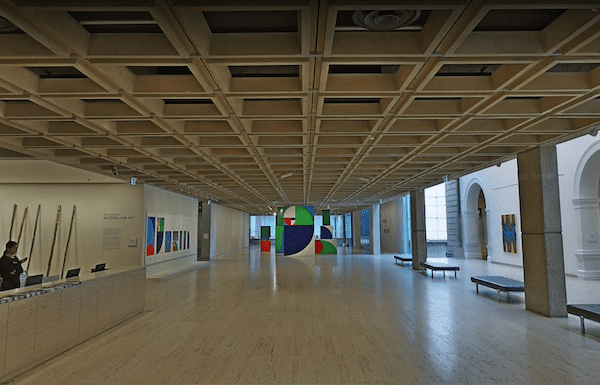Like so many other industries, Sydney’s art scene was hit catastrophically by COVID-19. Large institutions managed to remain mostly unscathed, but smaller galleries and emerging artists have been left in the lurch.
The Art Gallery of NSW ‘succeeded’ by pivoting heavily into education and general interest content, like many international art institutions. There’s good content on their YouTube page that continues their general approach to digital public programs pre-COVID.
The digitisation of ‘Art After Hours’ was a personal highlight of the lockdown era; Benjamin Law’s dulcet tones make even the grainiest jpeg of a portrait pop. But whilst a solid suite of digital content, it doesn’t appear that engagement was high. Few of their videos have cracked even a thousand views (unlike their pre-COVID content) — save, of course, for a feature of Delta Goodrem singing in the abandoned gallery. Apparently that’s where the views are. Yet even the Art Gallery now faces an uncertain future, with multimillion-dollar cuts to its budget recently announced.
‘Virtual shows’ became all the rage mid-lockdown — new independently crowdsourced shows, or an established space using their pre-existing platform to collate and amplify voices. I was excited by the prospect of these digital shows, and how the rise of new digital modes of collaboration gave room for artists to experiment. But when people are trapped in their homes with little ability or energy to engage with these new spaces, what do digital shows become?
I organised a few and was in a number of them. Each time, it felt as though I had done nothing. Most digital shows I encountered from emerging or student artists were a collection of deep-fried photos on a trial Squarespace page. Unlike digital art, physical objects do not read well on a screen. A 3D object will never be as engaging in a 2D space, especially when you don’t have the financial support to apply a coat of digital polish that lends legitimacy.
As restrictions lifted, there was a groundswell of voices desperate for a space or platform to engage their ideas and feelings. By then, however, Sydney’s physical arts landscape had changed to reflect the new world. Longstanding project space Down / Under Space (alongside Freda’s) closed in November. Small venues have collapsed, changed or been hindered by capacity restrictions, to the detriment of experimental and dynamic modes of expression.
Luckily, people are industrious, talented, and desperate for a creative outlet. New, short form, small and COVID-safe spaces emerged, domestic spaces became live music venues and in-game chats became symposiums. In one case, a corner store became an art gallery: the EZY ART SHOW collaboration between Brodie Cullen and and artist/corner shop purveyor Yu Xin Jia led to two experimental and energetic group shows of local artists in a Darlinghurst corner shop.
A stand-out for me is the Pink Place Collective: an artist-run initiative created by four emerging artists. Engaging and exploratory, its physical space ran with a wide array of bold exhibitions and projects over four months, each one different, exciting, and new. They’re temporarily closed but I’m eager for whatever’s next. These spaces tend to be inclusive — the desire to ‘make’ for the sake of ‘making’ is so present and engaging.
Venues large and small have been financial casualties of COVID. Carriageworks went into voluntary administration back in May 2020 after citing a catastrophic loss of income. Luckily, it was saved from liquidation only weeks later due to a philanthropic bailout and a colossal sum of donations from an array of moneyed benefactors. The stark contrast between the stories of Carriageworks and Down / Under is perhaps unsurprising, given its higher profile and demographic target. Nevertheless, the fate of an art space should not be left to wealthy Sydneysiders to decide.
What has stood out to me throughout these changes, closures and new programs is how COVID reinforced that we exist in a culture that does not engage with art on merit of culture or commentary, but rather the merits of how that culture can benefit commercial systems.
All this educational content from massive institutions came with a caveat that we should be engaging with content that makes us better workers during a time of mass trauma. Repugnant encouragement to stay productive and build entrepreneurship during lockdown contributed to a cultural undercurrent that subtly guilted people for not being ‘useful’.
What we can take from this is the importance of making art for self-fulfilment, community engagement and pleasure. No one should have to sew masks to feel successful during a global catastrophe.





